Gal Chechik
Bar Ilan University and Google research
Per-Query Visual Concept Learning
Aug 12, 2025Abstract:Visual concept learning, also known as Text-to-image personalization, is the process of teaching new concepts to a pretrained model. This has numerous applications from product placement to entertainment and personalized design. Here we show that many existing methods can be substantially augmented by adding a personalization step that is (1) specific to the prompt and noise seed, and (2) using two loss terms based on the self- and cross- attention, capturing the identity of the personalized concept. Specifically, we leverage PDM features -- previously designed to capture identity -- and show how they can be used to improve personalized semantic similarity. We evaluate the benefit that our method gains on top of six different personalization methods, and several base text-to-image models (both UNet- and DiT-based). We find significant improvements even over previous per-query personalization methods.
Knowing Before Saying: LLM Representations Encode Information About Chain-of-Thought Success Before Completion
May 30, 2025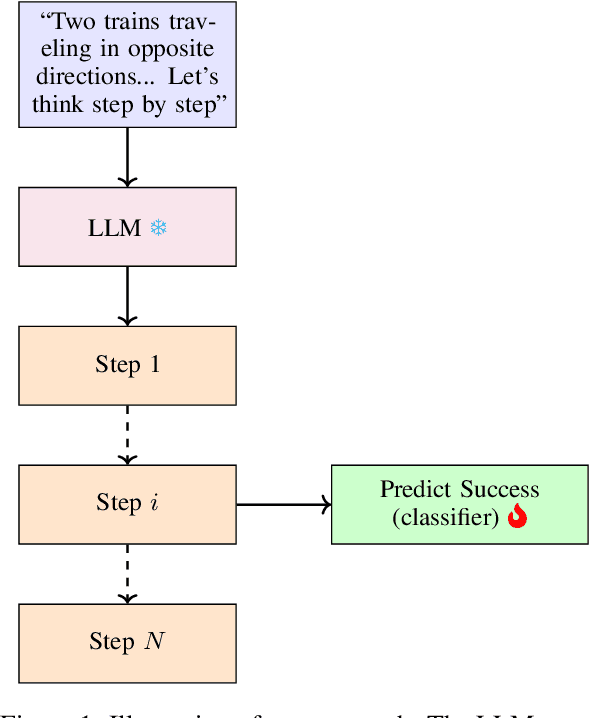
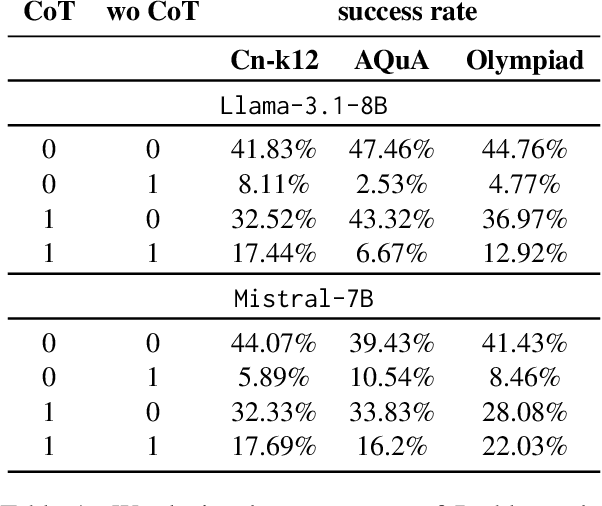
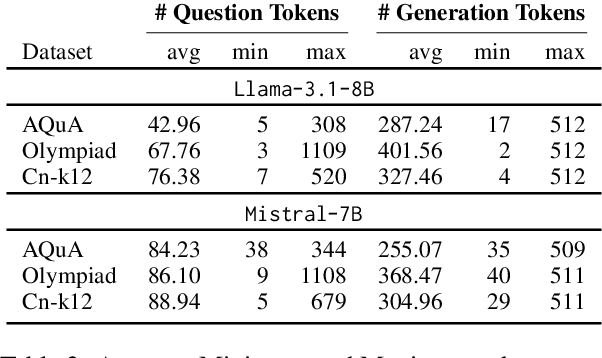
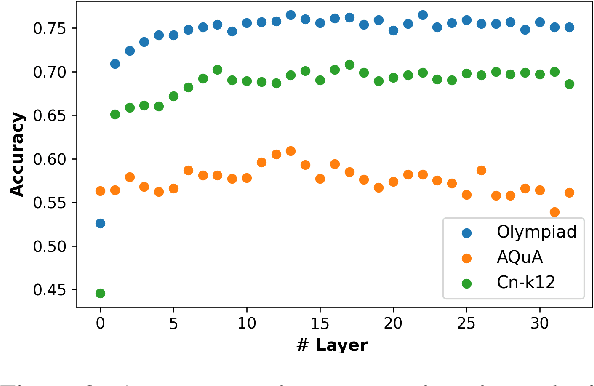
Abstract:We investigate whether the success of a zero-shot Chain-of-Thought (CoT) process can be predicted before completion. We discover that a probing classifier, based on LLM representations, performs well \emph{even before a single token is generated}, suggesting that crucial information about the reasoning process is already present in the initial steps representations. In contrast, a strong BERT-based baseline, which relies solely on the generated tokens, performs worse, likely because it depends on shallow linguistic cues rather than deeper reasoning dynamics. Surprisingly, using later reasoning steps does not always improve classification. When additional context is unhelpful, earlier representations resemble later ones more, suggesting LLMs encode key information early. This implies reasoning can often stop early without loss. To test this, we conduct early stopping experiments, showing that truncating CoT reasoning still improves performance over not using CoT at all, though a gap remains compared to full reasoning. However, approaches like supervised learning or reinforcement learning designed to shorten CoT chains could leverage our classifier's guidance to identify when early stopping is effective. Our findings provide insights that may support such methods, helping to optimize CoT's efficiency while preserving its benefits.\footnote{Code and data is available at \href{https://github.com/anum94/CoTpred}{\texttt{github.com/anum94/CoTpred}}.
Policy Optimized Text-to-Image Pipeline Design
May 27, 2025Abstract:Text-to-image generation has evolved beyond single monolithic models to complex multi-component pipelines. These combine fine-tuned generators, adapters, upscaling blocks and even editing steps, leading to significant improvements in image quality. However, their effective design requires substantial expertise. Recent approaches have shown promise in automating this process through large language models (LLMs), but they suffer from two critical limitations: extensive computational requirements from generating images with hundreds of predefined pipelines, and poor generalization beyond memorized training examples. We introduce a novel reinforcement learning-based framework that addresses these inefficiencies. Our approach first trains an ensemble of reward models capable of predicting image quality scores directly from prompt-workflow combinations, eliminating the need for costly image generation during training. We then implement a two-phase training strategy: initial workflow vocabulary training followed by GRPO-based optimization that guides the model toward higher-performing regions of the workflow space. Additionally, we incorporate a classifier-free guidance based enhancement technique that extrapolates along the path between the initial and GRPO-tuned models, further improving output quality. We validate our approach through a set of comparisons, showing that it can successfully create new flows with greater diversity and lead to superior image quality compared to existing baselines.
MaskedManipulator: Versatile Whole-Body Control for Loco-Manipulation
May 25, 2025Abstract:Humans interact with their world while leveraging precise full-body control to achieve versatile goals. This versatility allows them to solve long-horizon, underspecified problems, such as placing a cup in a sink, by seamlessly sequencing actions like approaching the cup, grasping, transporting it, and finally placing it in the sink. Such goal-driven control can enable new procedural tools for animation systems, enabling users to define partial objectives while the system naturally ``fills in'' the intermediate motions. However, while current methods for whole-body dexterous manipulation in physics-based animation achieve success in specific interaction tasks, they typically employ control paradigms (e.g., detailed kinematic motion tracking, continuous object trajectory following, or direct VR teleoperation) that offer limited versatility for high-level goal specification across the entire coupled human-object system. To bridge this gap, we present MaskedManipulator, a unified and generative policy developed through a two-stage learning approach. First, our system trains a tracking controller to physically reconstruct complex human-object interactions from large-scale human mocap datasets. This tracking controller is then distilled into MaskedManipulator, which provides users with intuitive control over both the character's body and the manipulated object. As a result, MaskedManipulator enables users to specify complex loco-manipulation tasks through intuitive high-level objectives (e.g., target object poses, key character stances), and MaskedManipulator then synthesizes the necessary full-body actions for a physically simulated humanoid to achieve these goals, paving the way for more interactive and life-like virtual characters.
Emergent Active Perception and Dexterity of Simulated Humanoids from Visual Reinforcement Learning
May 18, 2025Abstract:Human behavior is fundamentally shaped by visual perception -- our ability to interact with the world depends on actively gathering relevant information and adapting our movements accordingly. Behaviors like searching for objects, reaching, and hand-eye coordination naturally emerge from the structure of our sensory system. Inspired by these principles, we introduce Perceptive Dexterous Control (PDC), a framework for vision-driven dexterous whole-body control with simulated humanoids. PDC operates solely on egocentric vision for task specification, enabling object search, target placement, and skill selection through visual cues, without relying on privileged state information (e.g., 3D object positions and geometries). This perception-as-interface paradigm enables learning a single policy to perform multiple household tasks, including reaching, grasping, placing, and articulated object manipulation. We also show that training from scratch with reinforcement learning can produce emergent behaviors such as active search. These results demonstrate how vision-driven control and complex tasks induce human-like behaviors and can serve as the key ingredients in closing the perception-action loop for animation, robotics, and embodied AI.
Efficient GNN Training Through Structure-Aware Randomized Mini-Batching
Apr 25, 2025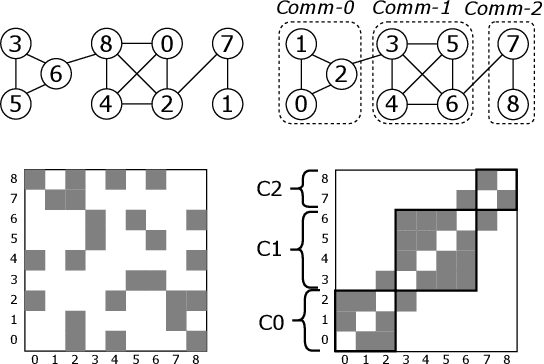

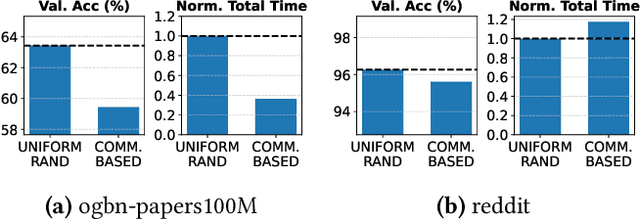

Abstract:Graph Neural Networks (GNNs) enable learning on realworld graphs and mini-batch training has emerged as the de facto standard for training GNNs because it can scale to very large graphs and improve convergence. Current mini-batch construction policies largely ignore efficiency considerations of GNN training. Specifically, existing mini-batching techniques employ randomization schemes to improve accuracy and convergence. However, these randomization schemes are often agnostic to the structural properties of the graph (for eg. community structure), resulting in highly irregular memory access patterns during GNN training that make suboptimal use of on-chip GPU caches. On the other hand, while deterministic mini-batching based solely on graph structure delivers fast runtime performance, the lack of randomness compromises both the final model accuracy and training convergence speed. In this paper, we present Community-structure-aware Randomized Mini-batching (COMM-RAND), a novel methodology that bridges the gap between the above extremes. COMM-RAND allows practitioners to explore the space between pure randomness and pure graph structural awareness during mini-batch construction, leading to significantly more efficient GNN training with similar accuracy. We evaluated COMM-RAND across four popular graph learning benchmarks. COMM-RAND cuts down GNN training time by up to 2.76x (1.8x on average) while achieving an accuracy that is within 1.79% points (0.42% on average) compared to popular random mini-batching approaches.
Accelerating Vehicle Routing via AI-Initialized Genetic Algorithms
Apr 08, 2025Abstract:Vehicle Routing Problems (VRP) are an extension of the Traveling Salesperson Problem and are a fundamental NP-hard challenge in combinatorial optimization. Solving VRP in real-time at large scale has become critical in numerous applications, from growing markets like last-mile delivery to emerging use-cases like interactive logistics planning. Such applications involve solving similar problem instances repeatedly, yet current state-of-the-art solvers treat each instance on its own without leveraging previous examples. We introduce a novel optimization framework that uses a reinforcement learning agent - trained on prior instances - to quickly generate initial solutions, which are then further optimized by genetic algorithms. Our framework, Evolutionary Algorithm with Reinforcement Learning Initialization (EARLI), consistently outperforms current state-of-the-art solvers across various time scales. For example, EARLI handles vehicle routing with 500 locations within 1s, 10x faster than current solvers for the same solution quality, enabling applications like real-time and interactive routing. EARLI can generalize to new data, as demonstrated on real e-commerce delivery data of a previously unseen city. Our hybrid framework presents a new way to combine reinforcement learning and genetic algorithms, paving the road for closer interdisciplinary collaboration between AI and optimization communities towards real-time optimization in diverse domains.
Adapting to the Unknown: Training-Free Audio-Visual Event Perception with Dynamic Thresholds
Mar 21, 2025Abstract:In the domain of audio-visual event perception, which focuses on the temporal localization and classification of events across distinct modalities (audio and visual), existing approaches are constrained by the vocabulary available in their training data. This limitation significantly impedes their capacity to generalize to novel, unseen event categories. Furthermore, the annotation process for this task is labor-intensive, requiring extensive manual labeling across modalities and temporal segments, limiting the scalability of current methods. Current state-of-the-art models ignore the shifts in event distributions over time, reducing their ability to adjust to changing video dynamics. Additionally, previous methods rely on late fusion to combine audio and visual information. While straightforward, this approach results in a significant loss of multimodal interactions. To address these challenges, we propose Audio-Visual Adaptive Video Analysis ($\text{AV}^2\text{A}$), a model-agnostic approach that requires no further training and integrates a score-level fusion technique to retain richer multimodal interactions. $\text{AV}^2\text{A}$ also includes a within-video label shift algorithm, leveraging input video data and predictions from prior frames to dynamically adjust event distributions for subsequent frames. Moreover, we present the first training-free, open-vocabulary baseline for audio-visual event perception, demonstrating that $\text{AV}^2\text{A}$ achieves substantial improvements over naive training-free baselines. We demonstrate the effectiveness of $\text{AV}^2\text{A}$ on both zero-shot and weakly-supervised state-of-the-art methods, achieving notable improvements in performance metrics over existing approaches.
TriTex: Learning Texture from a Single Mesh via Triplane Semantic Features
Mar 20, 2025Abstract:As 3D content creation continues to grow, transferring semantic textures between 3D meshes remains a significant challenge in computer graphics. While recent methods leverage text-to-image diffusion models for texturing, they often struggle to preserve the appearance of the source texture during texture transfer. We present \ourmethod, a novel approach that learns a volumetric texture field from a single textured mesh by mapping semantic features to surface colors. Using an efficient triplane-based architecture, our method enables semantic-aware texture transfer to a novel target mesh. Despite training on just one example, it generalizes effectively to diverse shapes within the same category. Extensive evaluation on our newly created benchmark dataset shows that \ourmethod{} achieves superior texture transfer quality and fast inference times compared to existing methods. Our approach advances single-example texture transfer, providing a practical solution for maintaining visual coherence across related 3D models in applications like game development and simulation.
Single Image Iterative Subject-driven Generation and Editing
Mar 20, 2025
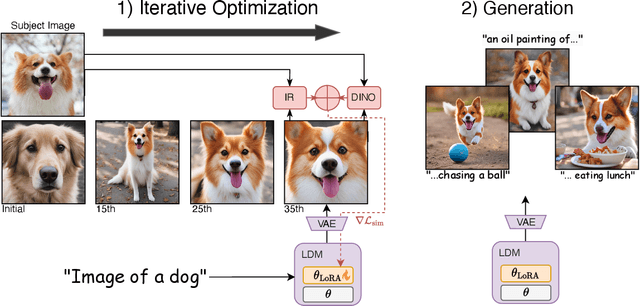

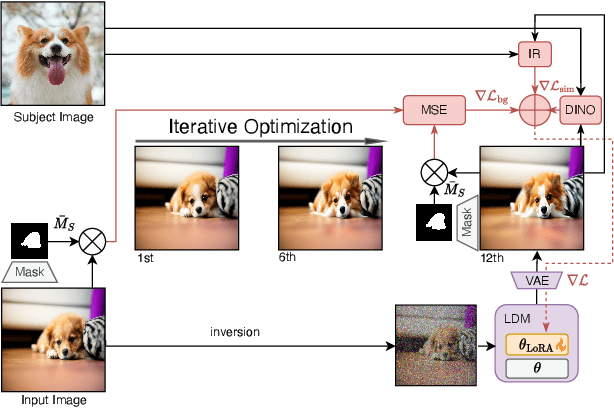
Abstract:Personalizing image generation and editing is particularly challenging when we only have a few images of the subject, or even a single image. A common approach to personalization is concept learning, which can integrate the subject into existing models relatively quickly, but produces images whose quality tends to deteriorate quickly when the number of subject images is small. Quality can be improved by pre-training an encoder, but training restricts generation to the training distribution, and is time consuming. It is still an open hard challenge to personalize image generation and editing from a single image without training. Here, we present SISO, a novel, training-free approach based on optimizing a similarity score with an input subject image. More specifically, SISO iteratively generates images and optimizes the model based on loss of similarity with the given subject image until a satisfactory level of similarity is achieved, allowing plug-and-play optimization to any image generator. We evaluated SISO in two tasks, image editing and image generation, using a diverse data set of personal subjects, and demonstrate significant improvements over existing methods in image quality, subject fidelity, and background preservation.
 Add to Chrome
Add to Chrome Add to Firefox
Add to Firefox Add to Edge
Add to Edge